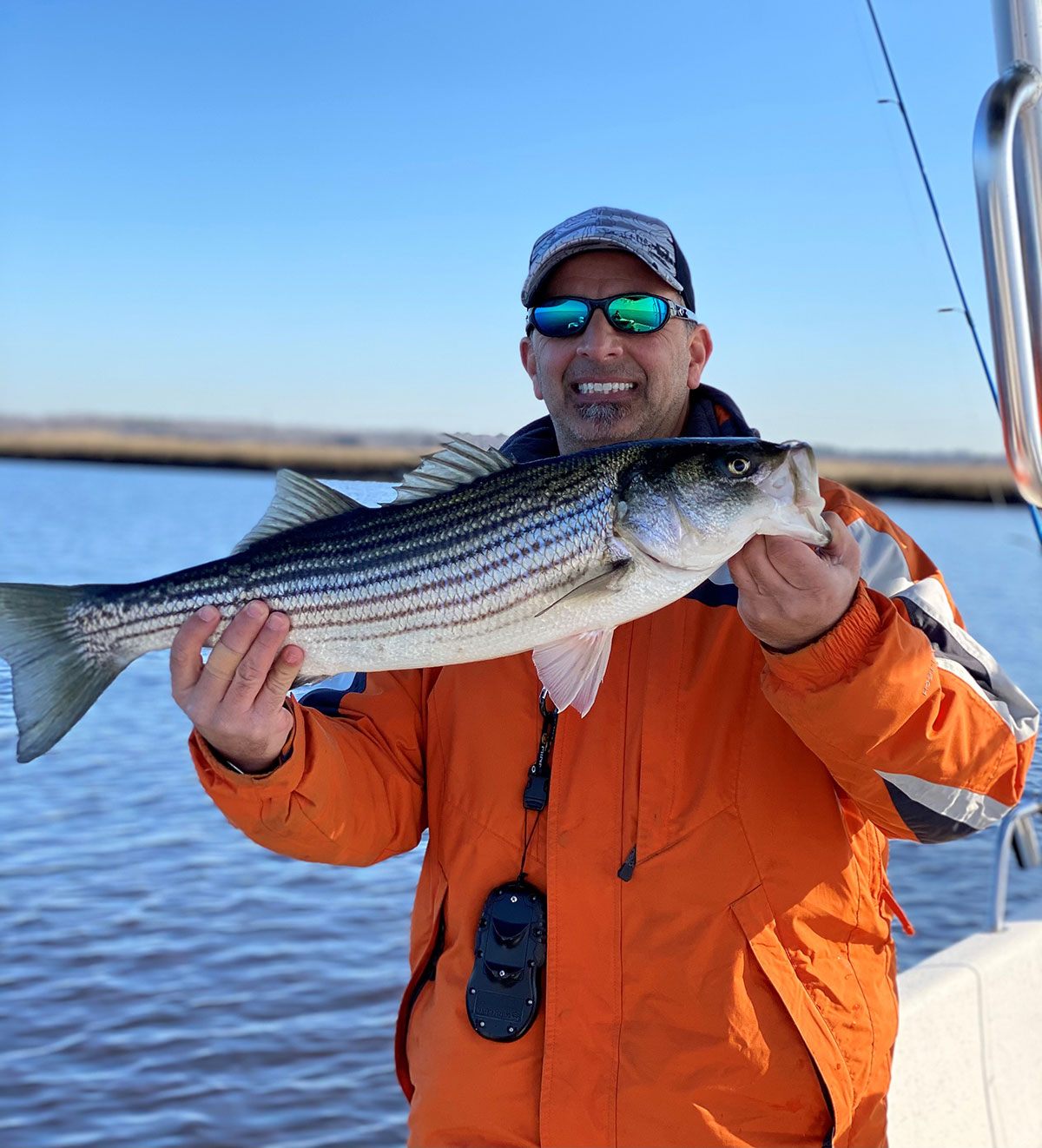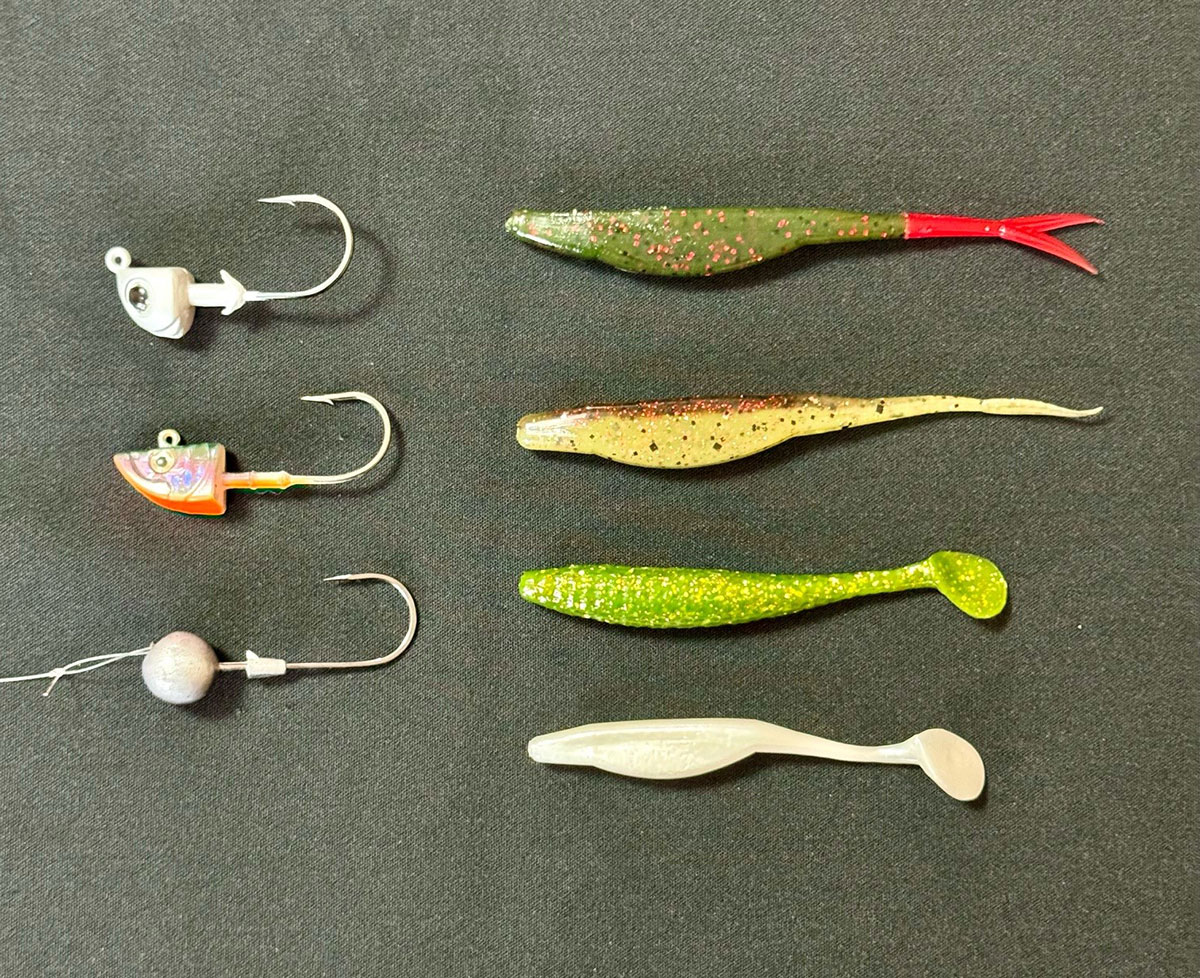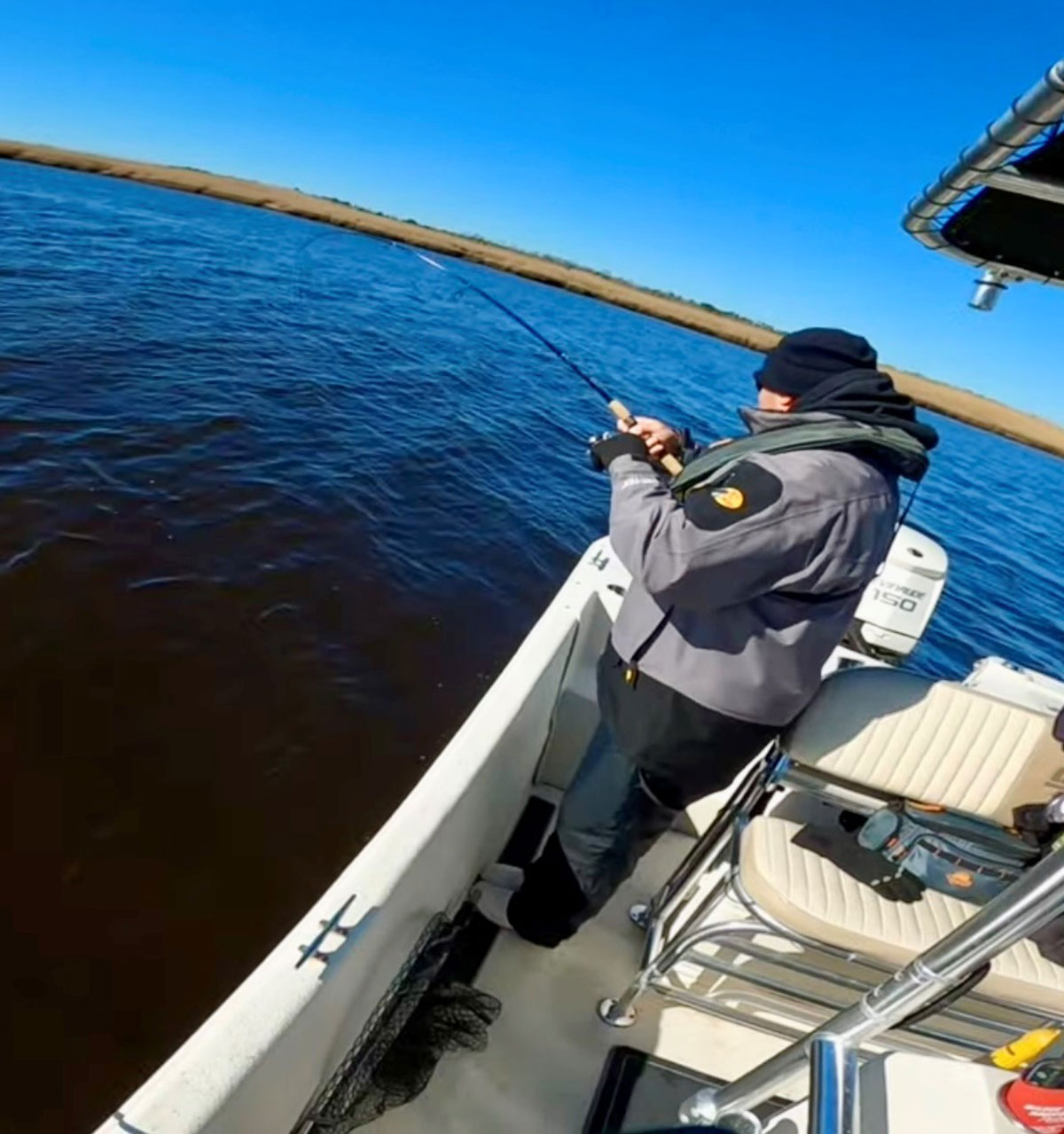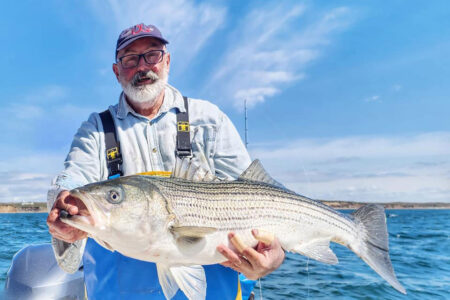
Light is right for Atlantic and Cape May County backwater stripers
As the spring striper run swings into full gear in the backwaters, estuaries and tidal rivers, one of my favorite ways to pursue them is by “Snap Jigging.” Unlike dunking baits like bloodworms or bunker chunks in hopes that a hungry striper will hone in on your scent trail, snap jigging consists of hunting stripers down using your favorite ball jigs, leadheads or even bucktails tipped with various soft plastics like Zooms, Keitechs, Gulps or even strips such as Otter Tails.
Snap jigging isn’t something new. In fact, it’s a fishing tactic that was developed and put into action by Capt. John Paduano over a quarter of a century ago in the ever-fertile waters around Montauk, NY, and introduced to readers of The Fisherman Magazine. It’s through the grace of god – and a little prodding by the late, great Fred Golofaro – that sharpies the likes of Capt. Paduano have continued to perfect and, more importantly, share this strike producing method with the rest of us so we too can cash in on its benefits!
Simply put, snap jigging is the technique of dropping your jig down until you touch-up on the bottom and then snapping (lifting) your jig up 1 to 3 feet off of the bottom and then following your line back down as your jig falls. I know I said “Simply put,” but this technique isn’t that simple. Well, at least half of the technique isn’t that simple. Staying in contact with the bottom and “snapping” or lifting is the simple part. Following your line back down as not to impede your jig’s descent, or to the contrary, lose feel of your jig as it falls is the part that will take some time to perfect. It’s also the part of the technique that usually sees the most action as striped bass tend to strike the lure as it falls. Be ready; when your line stops falling, but you know there’s no way you’re on the bottom, your jig is most likely in a hungry striper’s mouth.
Set the hook like your life counted on it; or as another “snap jig” disciple, John Skinner, likes to say, “hook-sets are free!”

Tools Of The Trade
In adopting the snap jig method, I’ve found that there are several factors that affect your jig’s descent, such as jig weight, water current, drift speed and line diameter. The lighter the jig weight, the slower the fall, but the more water current and even drift speed will come into play. This is where using the thinnest line possible becomes so very important. The thinner the line diameter, the less the current will play a part in creating a bow in your line and the more vertical your jig’s descent will be. If you’re not already using braided line, I highly suggest you make the switch as braided line offers greater strength and less stretch at a much-desired thinner diameter.
As with all fishing techniques, you need the right tackle, and snap jigging is no different. Let’s start from your rod and reel choice and work our way on down the line. You don’t need heavy gear to snap jig; in fact, I prefer the lightest rod and reel that I can confidently put in my hand. Nine times out of 10, I’m using the same gear that I use in the backwaters rapid-jigging for summer flounder. Now, before anyone blows a gasket, I primarily fish for stripers in Atlantic and Cape May counties; we don’t get the striped submarines that they get up in the Raritan. This is where your local knowledge of the biomass plays a major part in your tackle selection.
Once you’ve picked out your rod and reel, it’s time to think about your line. I religiously use 15-pound PowerPro braid. It’s super thin, super strong and doesn’t stretch. With a uni-to-uni knot, I add approximately 3 feet of 20-pound Seaguar fluorocarbon leader, using a loop knot to secure my jig at the end of the leader. The loop knot allows the jig to move as freely as possible.
As far as jigs, we all have our favorites. For snap jigging, I lean towards ball jigs no greater than an ounce. Lately, I’ve made it a point to focus on reducing my jig weight not only for stripers but also for flounder fishing. Less is certainly more when it comes to jig weight. A 3/0 or 4/0 hook with a baitholder collar is always a plus. Some anglers prefer a “Boxer” jig, while others choose a more utilitarian bullet-styled plain leadhead. My suggestion is to have a variety onboard and see what’s working on that particular day.
Now for the fun part. Which soft plastics to choose and use? Primarily, I use Zoom Salty Super Flukes in either 3- or 4-inch lengths however this year I’ve digressed a little and introduced Keitechs and other similar soft plastics into my striped bass arsenal. In the past years I was a tried-and-true green shad body devotee, but this year I’ve been using white and/or green paddletails with equal success. My theory is that the water has been exceptionally dirty this season and not only is the white easier for the stripers to see, the paddletails create more vibrations for the fish to “feel.” Am I setting the world on fire and holding any seminars about striper fishing? Absolutely not, but I am modestly holding my own and enjoying the fish that have accommodated my pursuits thus far this season.

On The Move
Snap jigging is not a stationary game; it involves going on the hunt, just like the quarry you’re pursuing goes on the hunt for its next meal. Both boaters and kayakers alike can cash in on the snap jigging game with the use of patience, perseverance, tenacity, local knowledge, good electronics and a little luck. Remember, this is a game of cat and mouse; you have to put in the time covering water, watching your sonar and hunting down these fish. Sometimes you will only happen upon a fish here or there. Sometimes the heavens will shine down upon you and your screen will light up like the sky on the Fourth of July!
We’ve all seen social media pictures and posts of sonar screens where the stripers are so “stacked up” that you could walk across them. Those are the days we all dream about and sometimes those dreams do come true. Now we just have to hope that they don’t have lock-jaw and are actively eating. When everything comes together and all of the stars are in alignment, snap jigging can lead to some of the most fast and furious fishing you’ve ever encountered.
I had a day 2 years ago that I literally hit the spot-lock on my Minn Kota trolling motor and “parked” my skiff right over a school of fish that were stacked one on top of the other and were feeding like it was their last meal before a trip to the electric chair. We were doubled and even tripled up and couldn’t release caught fish fast enough as to drop back down and jig up more!
Just remember one thing, and this is important, as fast as you found the school is as fast as they will disperse and you will have to hunt them down again.
Over the years, I’ve found that stripers, like summer flounder, will feed best during what I’ve coined the “Hour of Power,” that being the last hour of either the outgoing or the incoming as well as the first hours of same, which tend to be the best times to catch. Like belly-buttons, everyone has a theory about the best time to fish and I’m no exception. “The Hour of Power” theory has been fairly consistent for me and that consistency has built confidence. We all know that confidence tends to build success and success tends to bolster confidence. But in the end, it’s just a game of chance and luck…or is it?
I’d like to reiterate; I am in no way a fisherman the likes of Capt. John Paduano, Skinner, EliasV or even my local buddy Capt. Jerry Lynch of Diamond Jig Charters. These “sharpies” are at the top of the fishing food chain and have probably had their hands dipped in holy water at one time or another. I am just a retired cop who has turned his love of saltwater fishing into a YouTube Fishing Channel (@BStavFishing) where I try to share both my successes and failures with fellow anglers so we can all learn and grow in the sport that we love, fishing.
Wishing you the tightest of lines and the calmest of seas this and every season!




